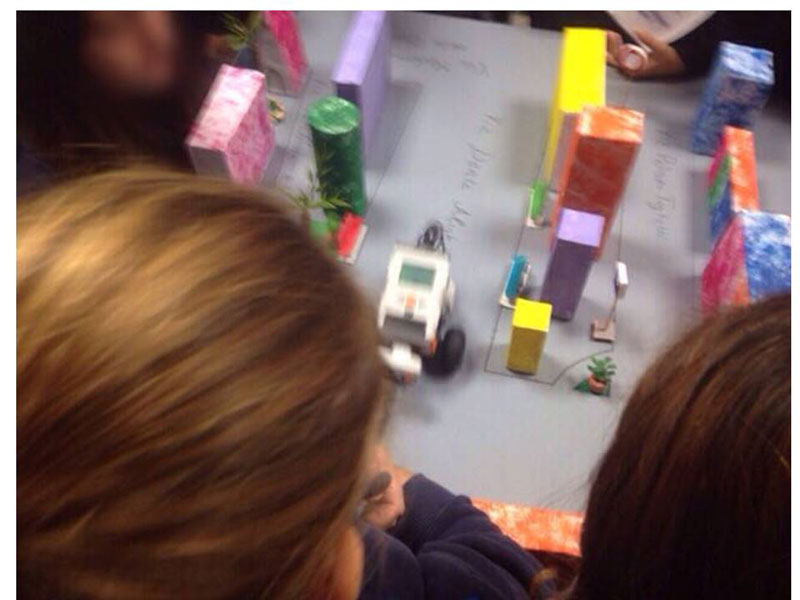by Federica Truglio, Michela Ponticorvo and Franco Rubinacci (University of Naples “Federico II”)
Educational robotics is not only a useful tool to learn how program a robot, but it is. It can also be a powerful method to improve other skills, such as social ability. A lab has been set up to investigate whether educational robotics can help to improve social interaction at school.
Educational robotics, like coding, is an important tool to promote learning processes – and in recent years it has achieved an important role in the field of technologies for learning. It is a powerful tool to promote learning processes. Educational robotics is not only a useful method to learn how to build and program a robot, it also represents an opportunity to improve the life skills (i.e., the ability to solve problems and to plan a strategy, self-esteem, social skills and lateral thinking). Moreover, educational robotics brings the coding into the real world by the means of its physical and tangible models. Indeed, educational robotics requires the use of “robot construction kits”, that are the boxes containing both a hardware (i.e., small brick, set of sensors) and a software (a programming interface). Therefore, the robotics technologies have several advantages over coding: a bigger sensory involvement, a greater incentive to learn and more immediate error handling.
Educational robotics is also ideally suited to group works, stimulating collaboration and cooperation through lab activities. In particular, educational robotic labs enable group members to coordinate their efforts, to delegate tasks and to complete a job with an higher motivation, whilst taking other group members into consideration. As a consequence, educational robotics labs are innovative tools that can help improve social and communication skills and increase inclusion and cohesion within a group.

Picture taken during the educational robotics lab. The students are building a robot in a group (the second activity).
We set up an educational robotics lab in a secondary school (in Naples), with the aim of determining whether this type of lab can help to improve social relations. Our educational robotics lab was held during curricular hours and lasted two months (from September to November 2017). A class of 23 first-year students participated. Before the beginning of educational robotic lab, we applied the sociometric test to students, in order to assess the starting social relations in the class-group. Sociometric test is a self-report consisting of four questions (examples of two questions appearing in sociometric test: (i) write the names and surnames of those classmates who you would like as room-mates during a school trip. You can write as many names as you like. (ii) Write the names and surnames of those classmates who you would not want as room-mates during a school trip. You can write as many names as you like). It allows to determine the number of choices rejections by group members.
The educational robotics lab was conducted during six weekly meeting, each lasting one or two hours (for a total of 10 hours). In every meeting, students have been divided in five different subgroups e have carried out various activities:
- In the first meeting, after learning some basics, each group of students produced posters about technologies, robotics and type of robot;
- In the second activity, the students have built the robots, in this way they have learned both how a robot is made and to work in a group;
- In the next meeting, after a short introduction about software to program, the students in group have formulated a string of information which has been hacked both in computer and in robot;
- In the fourth and fifth encounters, the students were asked to create road itineraries representing the environment that the robot has travelled. This was creative way of increasing their own connectivity territory;
- In the last meeting, the students have programmed with the software the robot, to make it follow the road itinerary correctly.
After the end of educational robotics lab we repeated the sociomatric test to determine whether there had been a discernible change in social relations among students following the lab sessions.
Statistical analysis of the sociometric test data (pre and post) indicated a substantial improvement in the social relations among students who took part in educational robotics lab (the number of choices among students doubled). This result might be due both to physical and tangible dimensions (the use of a tangible robot) of educational robotics and to the group work undertaken by the children.
In conclusion: educational robotics labs can offer an innovative means to support positive social relations among students. Further research need to: (i) repeat the experimental with students belonging to a different schools, and (ii) compare the educational robotic lab with a other creative and physical group activity (such as lab of creative arts or a lab about recycling). This comparison will allow us to determine if robotics labs specifically have this effect, or whether similar outcomes are achieved by physical group activities in general.
References:
[1] R. Didoni: “Il laboratorio di robotica. TD–Tecnologie Didattiche”, (27), 29-35, 2002.
[2] F. Rubinacci, M. Ponticorvo, O. Gigliotta, O. Miglino: “Breeding Robots to Learn How to Rule Complex Systems”, in Robotics in Education (pp. 137-142), Springer 2017.
[3] F. Truglio: “Tecnologie dell’apprendimento: la robotica educativa a supporto delle relazioni sociali nei gruppo classe”, Master Degree Thesis, Università di Napoli “Federico II”, 2018.
Please contact:
Federica Truglio, Michela Ponticorvo,
Franco Rubinacci, University of Naples “Federico II”, Italy











